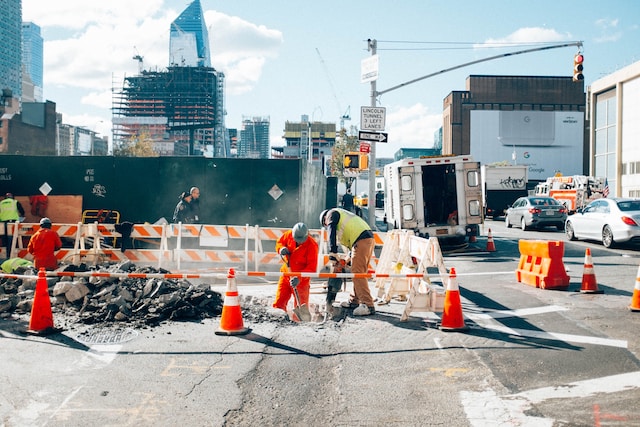Safety is paramount in the construction sector because risks abound on building sites. Several regulations and guidelines lay the foundation for a secure work environment and occupancy in the long run. Most importantly, the lives of occupants depend on the safety of the building once it is ready to occupy.
Despite the expectations, the ground reality is different in several American cities. Consider the example of San Francisco, where 3,407 concrete buildings have been found at a possible risk of collapse during a massive earthquake. You can imagine the widespread destruction these numbers can lead to in a densely populated city like San Francisco.
Although the improvements and innovations in building designs, quality, and construction methods are impressive, much needs to be done. The industry still has a long way to go when it comes to construction safety. As a business owner, your responsibility extends beyond the on-site safety of your workers. You must also give attention to the safety of residents in the long run.
In this article, we will share a few unwritten guidelines to ensure compliance and safety of every project your construction company undertakes.
Rule #1: Quality Should Be Non-Negotiable
The production price index (PPI) for building materials and components in the US has risen consistently, crossing 340 in 2022, much higher than the baseline of 100 in 1982. Many builders cut corners to overcome the pricing challenge, compromising the structural integrity of buildings. As a rule, you should use top-notch materials, from concrete to steel or any other building component.
Every detail matters, including the elevators installed in buildings. Quality should be a priority, whether you need high-tech elevators for high-rise projects or machine room-less (MRL) variants for low- to mid-rise buildings. MRL elevators are a cost-effective option for low-rise (less than 250 feet) construction with no space for a machine room.
According to BTS Elevator Packages, MRL elevators save installation time, space, and energy. Builders can opt for all-inclusive, ready-to-install packages tailored to their specifications. However, it is crucial to choose reputable providers you can trust for the quality and safety of materials.
Rule #2: Code Compliance is More than a Regulation
Building codes are laws setting minimum requirements for residential and commercial buildings to follow for structural systems, heating, ventilation, air conditioning (HVAC), plumbing, natural gas systems, and other aspects. In the US, building codes are enforced by state and local governments. For builders, compliance is the baseline of construction safety, not just a regulatory requirement.
Consider them a starting point and strive to achieve more than the minimum requirements of local, state, and national codes. You must be aware of the evolving building standards and take a proactive approach to implementing them. With this mindset, you can keep your projects on quality and maximize your reputation.
Rule #3: Invest in Continuous Inspections
Statistics show that the average completion timelines of new single-unit privately-owned residential buildings in the US increased by over one month in 2022. The average time required to build these homes was around 8.3 months in 2021. Considering these numbers, builders have long-term commitments to each project.
Continuous quality and safety inspection is the key to structurally sound construction. The foundation inspection is perhaps the most critical part because it determines the overall integrity of the building in the long haul.
A proper inspection procedure also covers other elements of the building as the project moves ahead. This rule emphasizes that proactive inspection can prevent potential structural failures and hazards throughout a building’s lifespan.
Rule #4: Implement Post-Construction Monitoring Systems
Implementing post-construction monitoring systems for ongoing structural health is another unspoken rule every construction company should abide by. Remember that building safety extends beyond construction. Your responsibility as a building does not end with handing over the project.
Post-construction continuous monitoring can help identify potential issues in a building before they escalate. You can do it by integrating structural health monitoring systems for real-time checks on changes, stress, or deterioration of the structure.
Adopting technology for ongoing surveillance enables you to address emerging concerns on the fly. It can enhance safety and prolong the lifespan of the building. Moreover, this approach consolidates your credibility as a builder.
In the construction sector, safety extends beyond compliance with building codes and regulations. It is an ethical responsibility to ensure that your buildings offer a haven to people living and working inside them. Moreover, it is an ongoing commitment that begins with the initial planning stages and continues through the project’s lifespan. Adhering to these unspoken rules can help construction companies to go above and beyond with the safety and quality of their projects.







